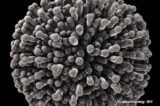

Managing oxidative risk with biological tools – Glutastar™ in Pre-fermentation
Managing oxidative risk
Throughout winemaking, several steps are known as strategic key points where oxidation mechanisms can occur: transport of grapes, at pressing, stabulation, racking, at the beginning of AF, during cold stabilization, storage and transport. This Winemaking Update will focus on biological tools available to winemakers to control oxidation prior to the onset of alcoholic fermentation, more specifically on how the specific yeast derivative, Glutastar™ can support the process of managing oxidation in white and rosé wines in a strategy to reduce chemical intrant such as SO2. WUP - Oxidation - Glutastar ENGManaging oxidative risk with biological tools Post-fermentation with Pure-Lees™ Longevity
Managing Oxidative Risk
We have seen in Part I of Managing oxidative risk with biological tools how to fight #oxidation in must with specific inactivated #yeast, such as Glutastar™, during pre-fermentation stages. But there are also sensitive stages post fermentation, where #wine needs to be protected from oxidation. 📝 A research conducted by the INRAE, under the supervision of SALMON JM showed the potential of specific inactivated yeasts to consume oxygen and protect wine from oxidation. One of the tested SIYs particularly stood out for its outstanding ability to scavenge oxygen. And it is now made available to #winemakers: PURE-LEES LONGEVITY. Winery scale trials demonstrated that using PURE-LEES LONGEVITY at the most sensitive post-fermentation stages enables to protect the wine against oxidation while reducing SO₂ additions. 🍷 PURE-LEES LONGEVITY is an essential tool to control wine oxidation post-fermentation and can be part of an overall #bioprotection strategy to preserve wine #aromas and color, and confer a longer shelf life and a better market value to your wine. Discover all the results in our Winemaking Update Part II 👉 WUP - Oxidation - Pure-Lees ENGThe New Winemaking Update – Organic Version: Copper sulfate use in organic vineyards – are wine yeast and bacteria affected by this fungicide?
In 2017, the organic vineyard areas had tripled in 10 years and approximately 5% of worldwide vineyards are now under organic certifications. For organic growers, who cannot use other fungicide sprays, copper sulfate is still an effective tool against downy mildew. With the increased production of organic vineyards in the world, the use of this
fungicide has also grown with the expansion of this type of farming.
It is known that elevated concentrations of this metal can be toxic to yeasts and bacteria. Our results have shown that wine yeast and bacteria do not appear to be significantly affected by Cu concentrations higher than 15 mg/L, except in the case of malolactic fermentation in white wines, where concentration > 7.5 mg/L can impact the MLF. High pH and high Cu concentrations can impact wine yeast viability and lag phase.
To read more about this topic, please consult our Winemaking Update - Organic Version
WUP Organic 2020 Cu- ENG LR
Wine bacteria to control volatile phenols from Brettanomyces
This issue of the Winemaking Update explores a natural way to control Brettanomyces yeast and the volatile phenols they produce, with selected wine bacteria used to conduct malolactic fermentation.WUP #2 2014 South Africa
- 1
- 2
